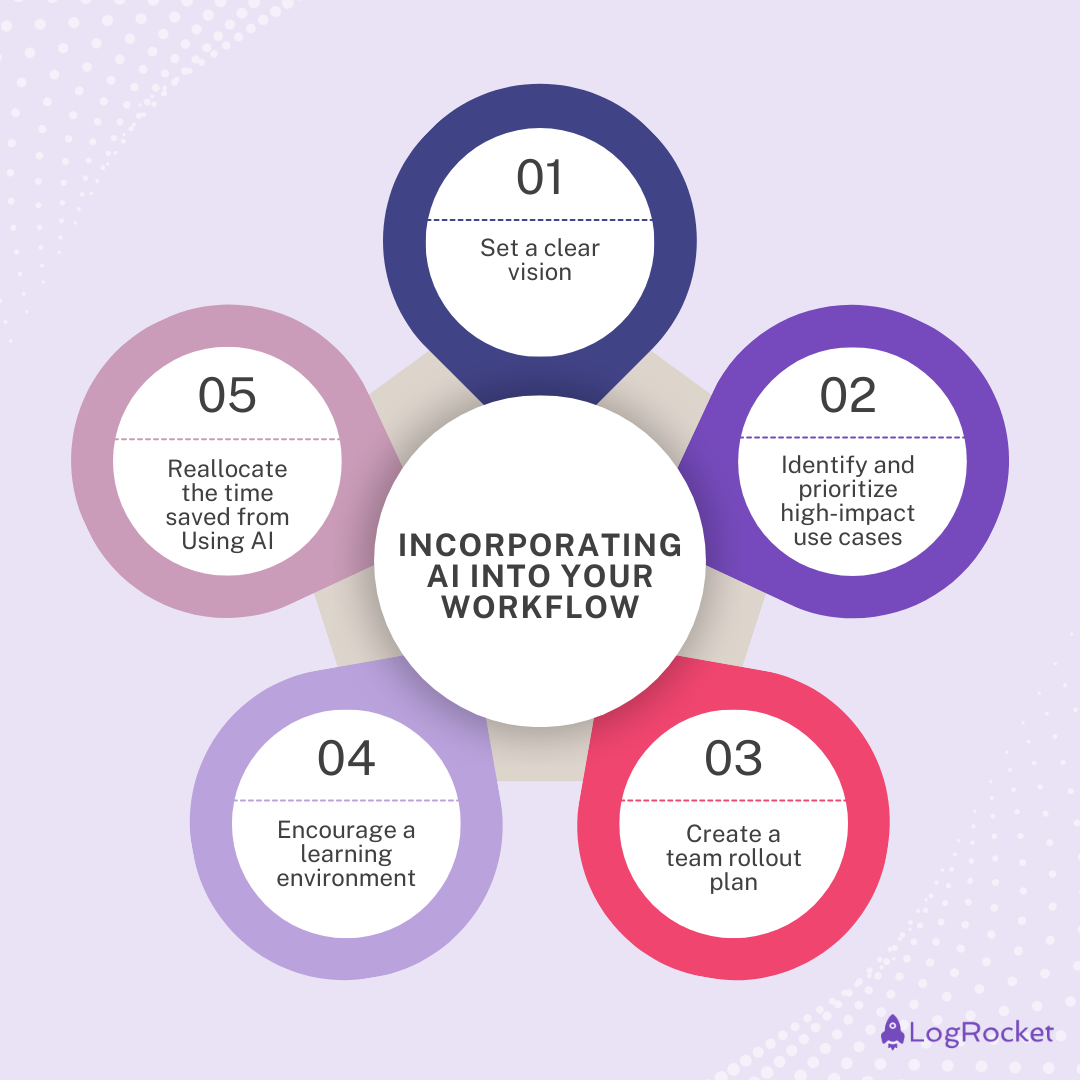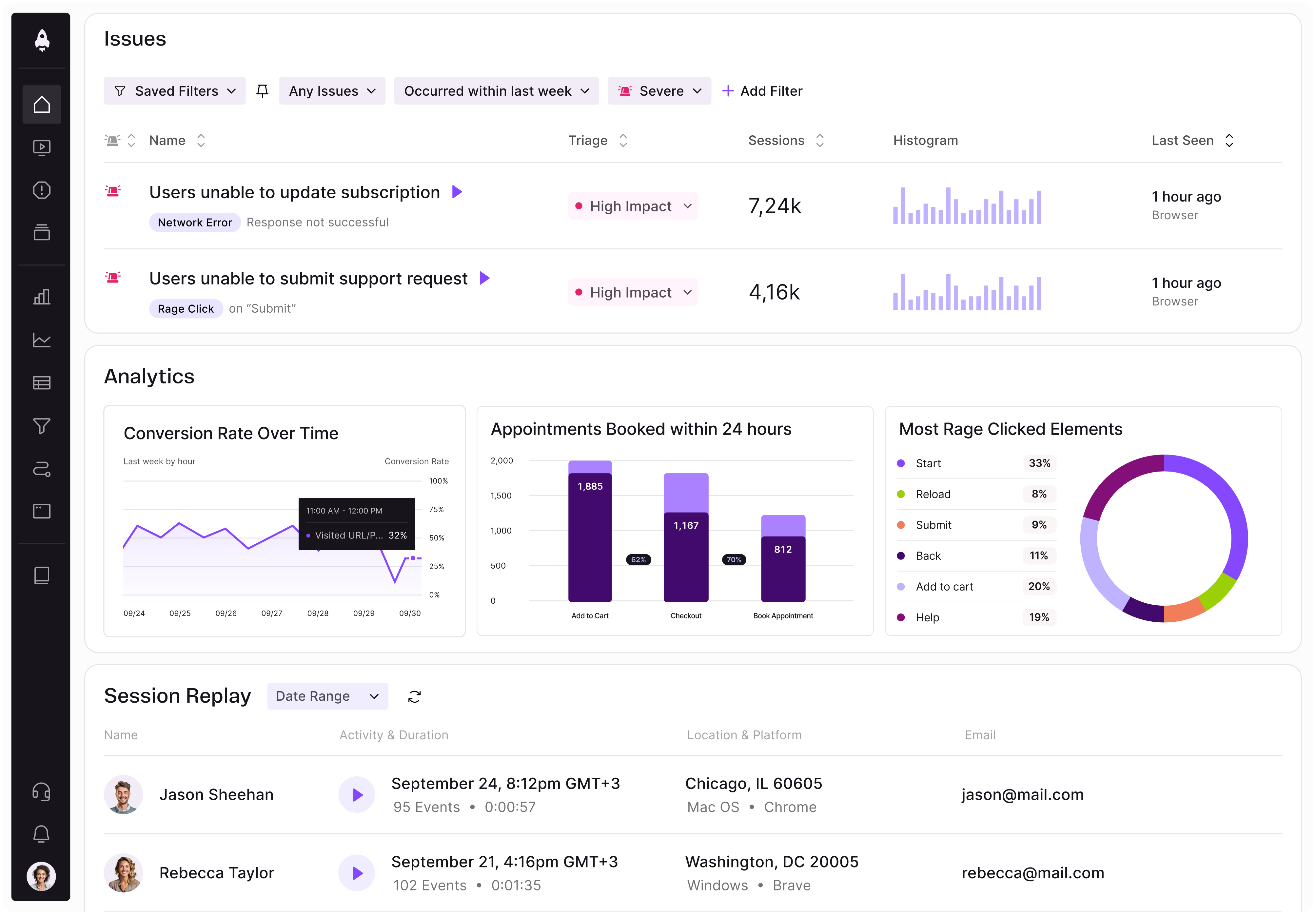As we speak, the top organizations are moving beyond using AI simply because of the hype. Instead, leaders want AI tools that provide real business value and drive measurable outcomes. While many cite productivity as a top goal, it’s also important to consider how you can leverage AI to build better products for your customers.

To do this, you need to avoid allowing your AI implementation to become a Frankenstein’s monster — fragmented, disjointed, and lacking a clear purpose — and instead develop a cohesive AI strategy. The strategy should bring together the right people, tools, and processes to support the overall product strategy.
In this article, we’ll cover how to develop an AI strategy that makes a positive and measurable impact on your workflow.
To set yourself up for AI success, start by developing a structured process that enables you to align on a clear vision and then roll out your plan to your larger product team. Here are five key steps to help guide your implementation:

Your AI strategy should align with your business strategy. Using AI should help propel the business goals forward. Otherwise, you’re just using AI with no validated purpose.
Having a clear vision will help support implementation and gain stakeholder buy-in. Some ideas for AI goals include:
Like any other strategy, you should consider what metrics you’ll use to determine if the AI is having an impact. Common evaluation criteria can include:
Establishing a clear vision allows you to monitor progress to ensure AI integration is meaningful and provides measurable value to your organization.
Not every task or process will benefit equally from AI. You’ll need to assess each use case and identify the ones that’ll have the most impact.
Start by identifying the challenges and gaps that your team faces. Define how AI will support the business use case and what apps could help. In “The 2025 State of Product Management Report,” these areas were identified as the most beneficial for AI integration:
Some other use cases could include:
Evaluate each use case to determine which could have the biggest impact. Here are some criteria to consider:
Plotting feasibility against impact helps guide which use cases to prioritize. A visual tool like a prioritization matrix makes it easier to identify use cases that offer the highest value with strong feasibility.
By prioritizing high-impact AI use cases, you can create an AI strategy that produces a positive ROI.
Implementing an AI strategy requires thoughtful planning and strong change management. Change is often difficult, and it’s natural for team members to resist, feel uncertain, or have reluctance to adapt to new tools.
As a product manager, you may have to address concerns that AI will replace human roles. It’s important to handle these fears for a successful rollout. Your AI strategy should show the clear collaboration between AI tools and irreplaceable human qualities like creativity, empathy, and good judgment calls.
Create a clear AI implementation plan that outlines key milestones, training sessions, and integration phases. You should also create space and time to iterate based on team feedback.
AI adoption isn’t as widespread as you may think. “The 2025 State of Product Management Report” found that 54 percent of product leaders haven’t adopted AI to support at least one use case.
Since AI tools and capabilities are new, it’s important to create a culture of learning. This approach helps team members become comfortable with integrating AI into their work. Encourage experimentation with various generative AI use cases to discover what works for your team.
Here are a few ideas to support team members as they build AI literacy:
People often mention how they can do their jobs faster after incorporating AI into their workflows. But what do they do with this extra time? Surveys conducted by the University of Lausanne, Switzerland, involving employees and managers using generative AI to save time, found:
You should develop a plan to track freed-up time and what to do with it. Start by evaluating the “time spent versus time saved” metric to pinpoint how many hours your team gets back with AI. With this number in mind, you can brainstorm ideas for how to use the newfound time to good use.
As a product manager, you can set the tone for how to reallocate time. It may be toward personal growth, like continued learning or employee well-being. You could encourage your team to try new challenges, develop innovations, or work on other strategic tasks. Guiding what to do with saved time ensures that AI implementation leads to meaningful changes.
It’s one thing to develop a process but an entirely different thing to actually implement it within your product team. To help with this, the following section covers examples of successful AI integrations from companies that you might be familiar with.
The popular American pizza chain uses BigQuery, Vertex AI, and Gemini models to build predictive tools for its app. It’s designed to monitor user behavior and anticipate customer orders. The predictive analysis allows product managers to make data-driven decisions on feature prioritization and product enhancements.
Coop, a grocery store chain, uses AI for predictive analytics to ensure product availability. It helps product managers optimize inventory levels to match real-time demand. The AI tool has resulted in a 43 percent improvement in forecasting accuracy, which has reduced food waste and improved sustainability.
Trace One is a product lifecycle management provider that uses AI for documentation management and clear communication between stakeholders. The AI automatically extracts information from complex documents and transforms it into up-to-date product summaries and data sheets. The process saves time, improves accuracy, and ensures compliance.
Using AI doesn’t guarantee increased productivity, nor does it ensure that your team will develop innovative product solutions. Achieving meaningful impact with AI requires thoughtful planning, strategy, and monitoring. Don’t just adopt AI simply because it’s trendy or new.
Instead, experiment with different AI tools and applications to find the ones that best suit your team’s needs. Remember, AI should only serve as a supportive assistant, as it can’t replace human creativity and insights.
Featured image source: IconScout

LogRocket identifies friction points in the user experience so you can make informed decisions about product and design changes that must happen to hit your goals.
With LogRocket, you can understand the scope of the issues affecting your product and prioritize the changes that need to be made. LogRocket simplifies workflows by allowing Engineering, Product, UX, and Design teams to work from the same data as you, eliminating any confusion about what needs to be done.
Get your teams on the same page — try LogRocket today.

Most teams fail at autonomy. Learn how clear rules help product teams move faster without micromanagement.

A practical framework for PMs to use AI in ideation without sacrificing judgment, strategy, or decision quality.

A practical five minute revenue estimation method to help product managers compare ideas, drop low impact features, and prioritize smarter.

A practical guide for PMs who want to stop being bottlenecks, delegate smarter, and lead teams effectively with a clear ownership framework.